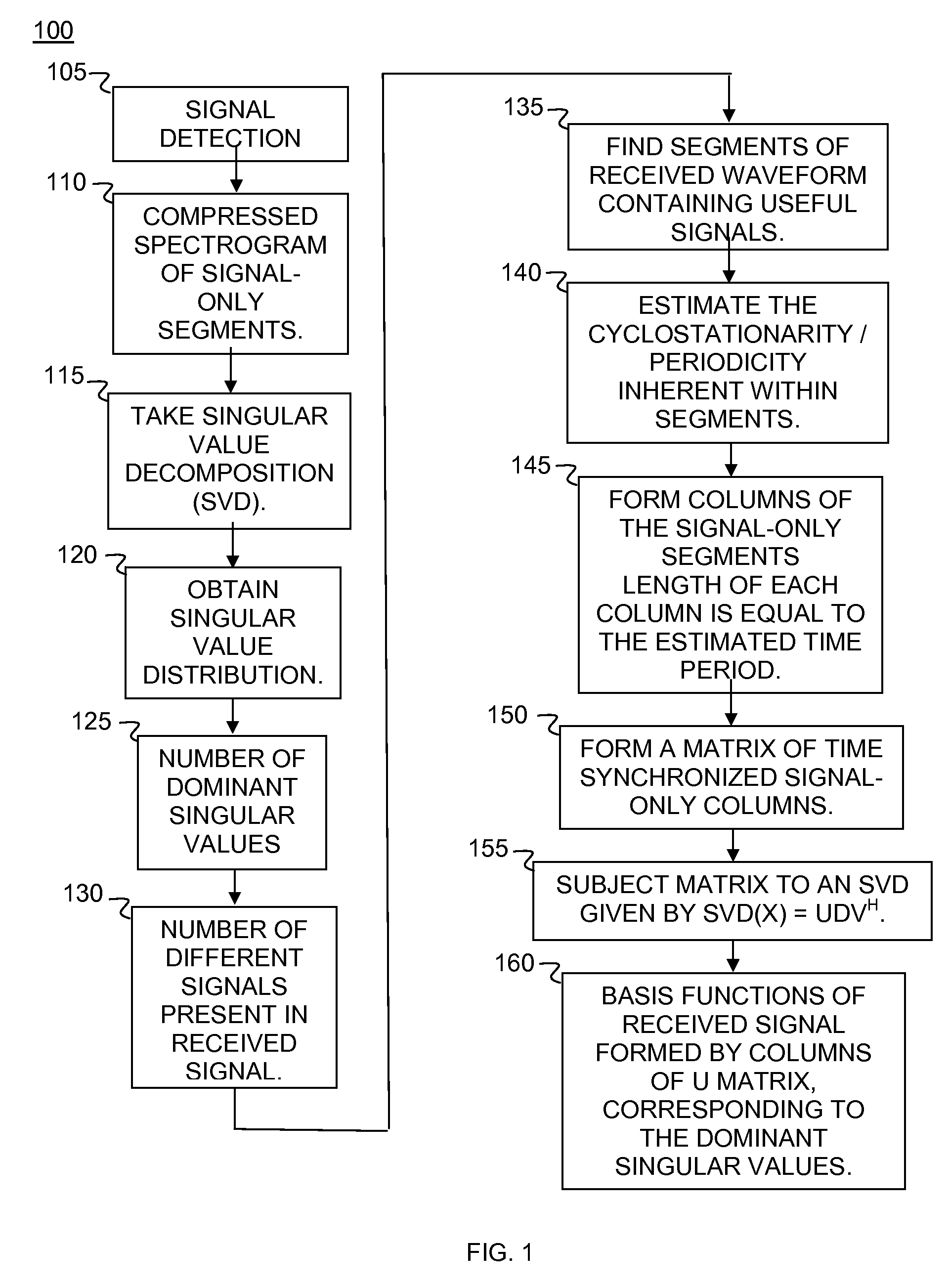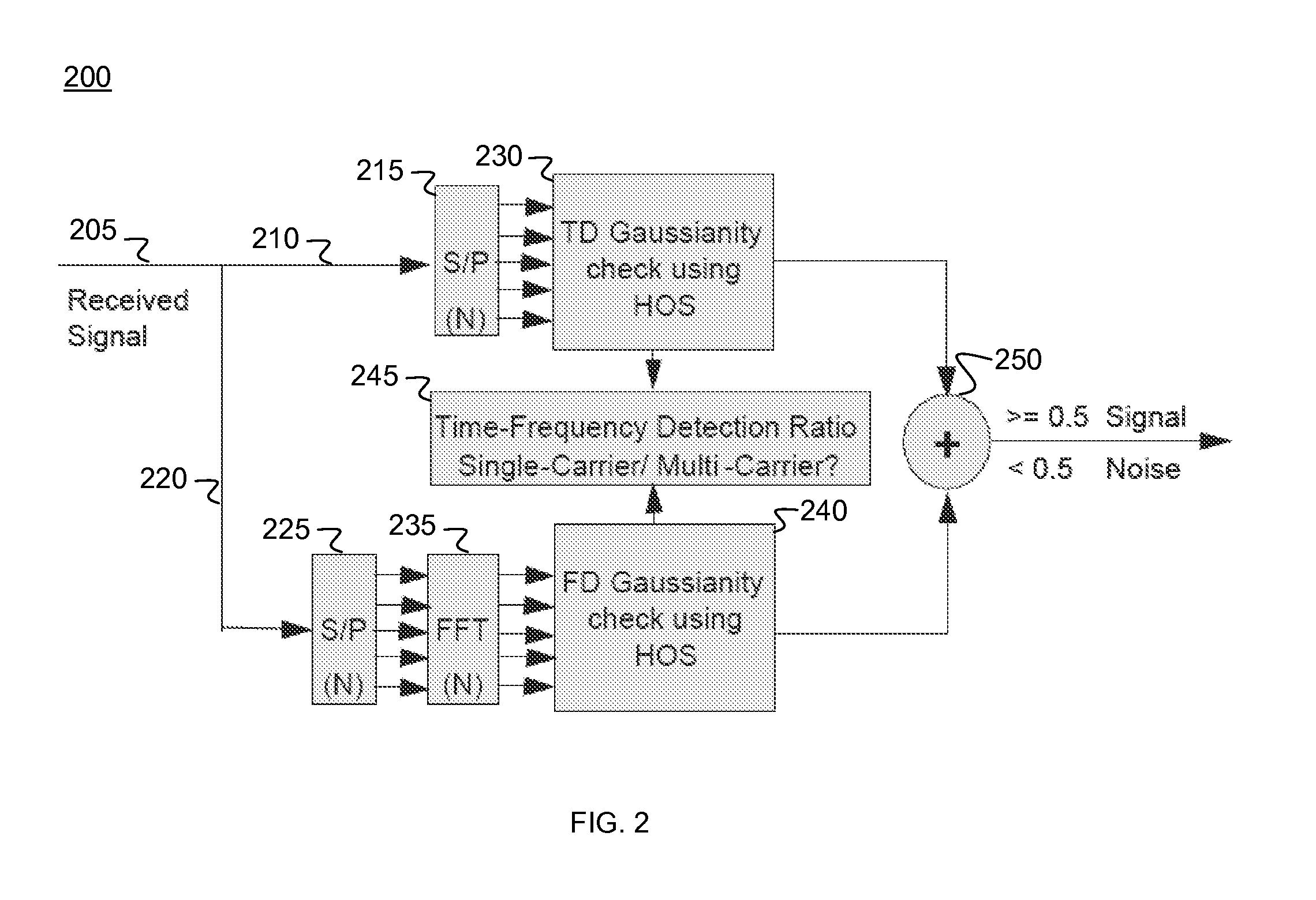Method and apparatus for multiple signal identification and finding the basis functions of the received signal
a signal and base function technology, applied in the field of signal detection, can solve the problems of cumbersome implementation of methods suggested previously for multiple signal identification in practice, and it is not possible to estimate the basis function, so as to improve the estimation of the basis function of the received signal, simplify and efficiency, the effect of easy computabl
- Summary
- Abstract
- Description
- Claims
- Application Information
AI Technical Summary
Benefits of technology
Problems solved by technology
Method used
Image
Examples
Embodiment Construction
[0034]Embodiments address the problems of multiple signal identification and finding the basis functions of the received signals.
[0035]FIG. 1 depicts a simplified flow chart 100 of a method for multiple signal identification which requires far less computation as compared to traditional techniques. After signal detection 105, a compressed spectrogram of the signal-only segments of the received waveform 110 is obtained and the singular value decomposition (SVD) of it is taken 115 to obtain the singular value distribution 120. The number of dominant singular values 125 determines the number of different signals that are present in the received signal 130. For finding the basis functions, embodiments find only those segments of the received waveform that contain the useful signals 135 and estimate the cyclostationarity (a signal with statistical properties that vary cyclically over time) or periodicity inherent within them 140. Note that when cyclostationarity is specified, periodicity...
PUM
 Login to View More
Login to View More Abstract
Description
Claims
Application Information
 Login to View More
Login to View More - R&D
- Intellectual Property
- Life Sciences
- Materials
- Tech Scout
- Unparalleled Data Quality
- Higher Quality Content
- 60% Fewer Hallucinations
Browse by: Latest US Patents, China's latest patents, Technical Efficacy Thesaurus, Application Domain, Technology Topic, Popular Technical Reports.
© 2025 PatSnap. All rights reserved.Legal|Privacy policy|Modern Slavery Act Transparency Statement|Sitemap|About US| Contact US: help@patsnap.com



